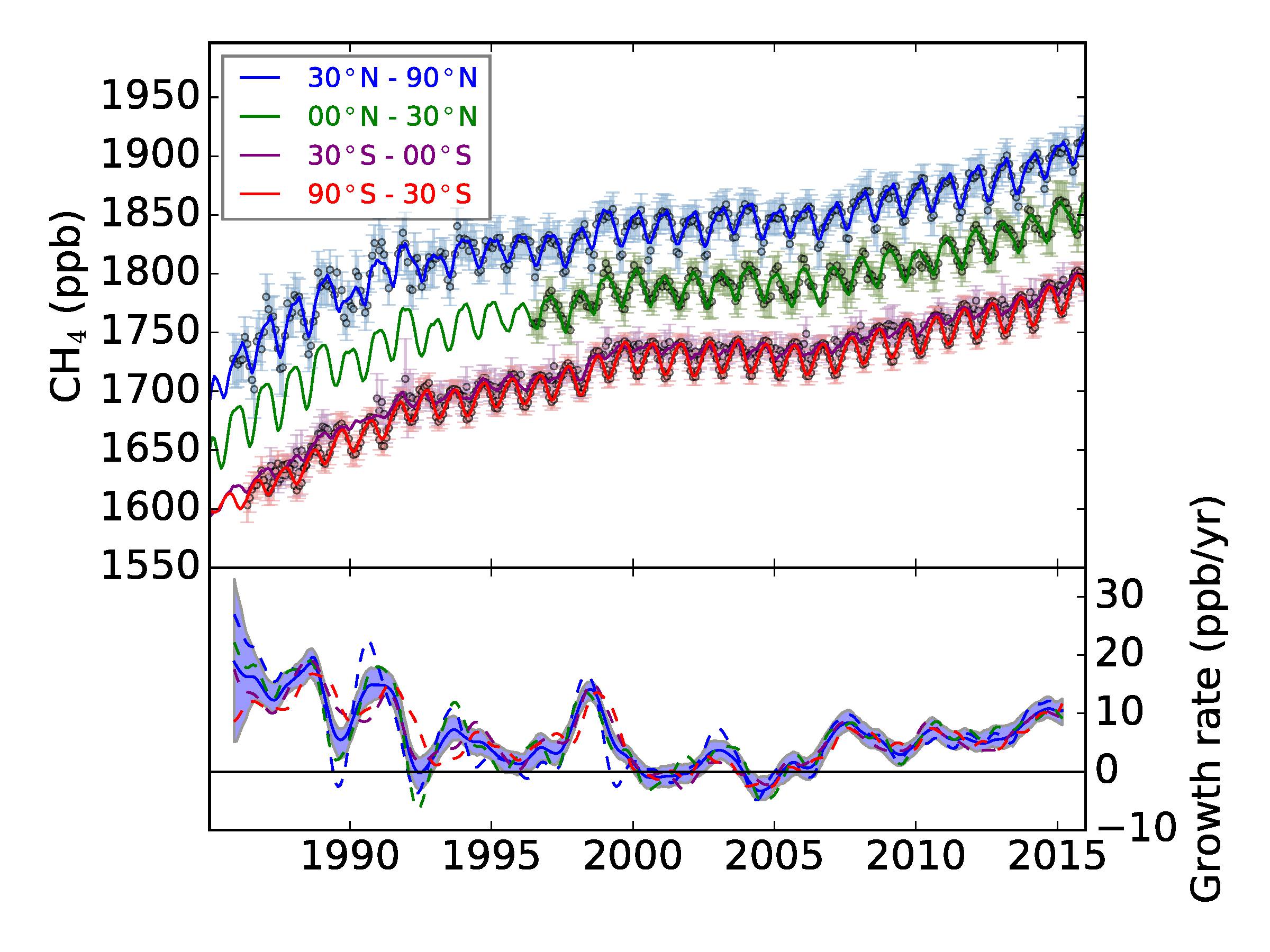MOYA is a NERC funded research programme which began in May 2016 and will run for four years. Sixteen research partners make up the MOYA consortium.
The central objective of the MOYA project is to move towards closing the global methane budget through undertaking new observations and further analysis of existing data.
Since 2007, the atmospheric methane burden has increased sharply and has simultaneously become more depleted in the 13C isotope. The causes of this rise, and indeed of the preceding “pause” in growth. are not fully understood and highlight the level of uncertainty that currently exists about the global methane budget and its implicit source and sink processes.
One current hypothesis for the recent growth, we will be tested here, is that recent changes are primarily being driven by climatic and meteorological influences on the major biogenic sources of methane, particularly wetland in the tropics. Other drivers of change that will be investigates are the potential increases in ruminant emissions, fugitive emissions from the oil and gas industry, or changes in the photochemical methane sink.

Methane mole fractions (top) and annual-mean growth rate (bottom) from AGAGE measurements, averaged into four latitudinal bands (extended from Rigby et al., 2008*)
The specific aims of the project are:
- achieve radical improvement in the measurement of methane and its isotopologues in the atmosphere, to understand what changes are happening on global and regional scales
- understand why these changes are occurring through targeted field campaigns and the interpretation of atmospheric measurements using advanced modelling methods
- provide predictive power on how methane sources and sinks may change in the future